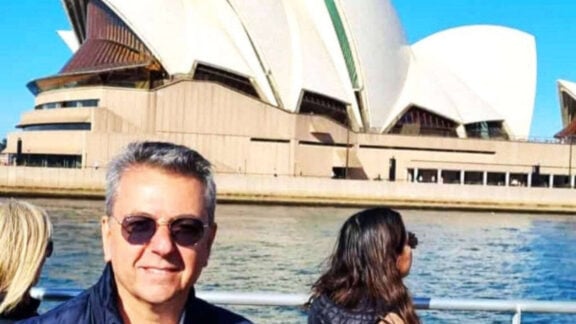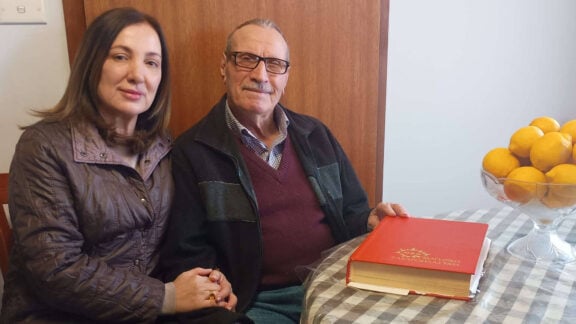A crustacean cracker is the title of Dean Kalimniou’s newest anthology Kelyfospastis. In this text we are invited to search for clues to our past, our history, our sense of self-hood, by noting the imprints that have survived the ravages of time.
The meanings and significance hidden within these obscure remnants are not obvious to the ordinary reader. They need to be opened up, explored and deciphered. The poet takes us with him along a winding and tortuous road. He confesses the pain and anguish of trying to traverse the impasse of history, but also the disillusionment of the present. He describes the silent plea for redemption, a plea which is both communal and personal. He seeks some sort of assurance that our history has a more significant meaning than its broken shells ‘Στην λυκαυγή των τροπικών επιρρημάτων, τσουγκρίζονται οι τάφοι των απογόνων.’ Will he expose the cracks which reveal the truth beyond our history’s silences? Will the poems which follow this introduction expose the dye which obscures our true lineage?
He constructs his text by adding poem after poem in a sequence which represents a ‘never ending film’ (ΑΡPΑΒΩΝΑΣ). This film visually represents the poet’s journey, a story which is ‘un-narratable’. Paradoxically, however, the epigram in this poem quotes Clement of Alexandria, who advised those who are seeking wisdom to look beyond the visual image and to seek understanding by listening to ‘the gentle breeze’ (as the prophet Elijah was told by God), and to hear the voice. So in what way does the poet follow this method? Why does he appear to opt for the visual medium rather than the oral story? Is this because each fragment in this sequence of imagistic poems is about broken dreams, ‘Aνεκδιγήτος ο χάρτινος μουσαμάς των πλακοστρωμένων μας ονείρων’, which do not have a beginning and an end? Can the poet transcend the grief of disillusionment and hear the gentle breeze and listen to the voice amidst such despair?
The peasants ring the bell and we interpret it as a sign of their hospitality in Kalimniou’s poetry. The sounds which they are making are in fact a cry of pain, by simple people caught up in a trail of destruction, seeking redemption, ‘ανατέλουν σαν χολόλιθοι οι προτελευταιοι φθόγγοι των ψαλμών, αντίτιμο της αυτοαφέσεως’. Kalimniou shows that he has matured as a poet. His Greek world is not the idyllic topos interpreted through the heroic stories he had been nurtured with. But despite the deepening crisis and anxiety which he and his compatriots are facing, he continues to remind his readers that the ‘beauty of his ancestors’ relics are unbearable’. (ΛΕΞΕΙΣ). He knows that what he is saying seems paradoxical, yet having searched for truth, and weighed down by what he has found, he dares to put together words which can express this extremely wondrous, although insane idea, ‘Οι λέξεις είναι οι κόκκοι παραφροσύνης που πνίγουν τα ερείπια της ερήμου’. In ΕΝΤΙΜΗ ΑΛΗΘΕΙA, the poet admits that the myths, the gods of the Greek past, might be like the gaping wound of the extracted tooth socket. They are ‘declining gods who wilt away’ since they are now perceived as ghosts which haunt the present, having voices which resemble the murmurings of the werewolf, who curses, having been rudely awakened. This is the reality of Greece’s present situation. This is the downpour Η ΚΑΤΑΙΓΙΔΑ which has caused the destruction of the dream. The past cannot be resurrected, since its beads have become fossilised remnants which cannot be softened ‘Πως’να ανθίσουν πάλι τα παραπετάσματα, πώς να νιώσουν βελούδο οι οστεοπωρωμένες χάντρες του κομπολογιού?’ And yet in ΜΕΤΑΦΘΙΝΟΠΩΡΙΝΟ (beyond autumn), beyond the preview of death and dying creation there is an inexhaustible azure, an unending vision of beauty. Ιt is the colour which signifies hope for the Greek diasporic writer, it is a colour which reminds the exile that home is where the sea and the sky meet, where the seasons are felt, it lies beyond our senses, ‘beyond our feet.’ There beyond the crustacean shells lies the azure blue. Kalimniou reminds us that by cracking the hard shell of the crustaceans we may find truths which we were unaware of. Even as the skeletal remains of shells may haunt or hurt us, they may also lead us to a new understanding. It is up to the reader to unravel yet another puzzle from the broken fragments of his images in order to locate what Kalimniou wants to tell us, but also from where he draws his sense of hope.
* Anna Dimitriou holds a PhD from Deakin University in Geelong.
Dean Kalimniou’s poetry collection Kelyfospastis along with two others, Anisixasmos and Plektani will be launched on 8 September 2013 at 3.00 pm at the Panarcadian Association, 570 Victoria Street, North Melbourne, by Professor Vrasidas Karalis.
Advertisement
Review: Kelyfospastis
Dean Kalimniou’s poetry collection Kelyfospastis along with two others, Anisixasmos and Plektani will be launched on 8 September









